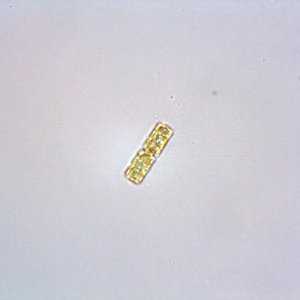
Protocol Citation: Jana Hinners, Sinead Collins 2020. Cryopreservation of marine diatoms. protocols.io https://dx.doi.org/10.17504/protocols.io.5jyl8mj88g2w/v1
License: This is an open access protocol distributed under the terms of the Creative Commons Attribution License, which permits unrestricted use, distribution, and reproduction in any medium, provided the original author and source are credited
Protocol status: Working
We use this protocol and it's working
Created: December 12, 2019
Last Modified: August 04, 2020
Protocol Integer ID: 30928
Keywords: croypreservation, thawing, diatoms
Abstract
Cryopreservation and thawing protocol for Thallasiosira diatoms.
Attachments
Materials
MATERIALS
Liquid nitrogen
Tissue Culture Flask, 50ml, 10/CsBio Basic Inc.Catalog #TCF70-50.SIZE.1PK
DMSOMerck MilliporeSigma (Sigma-Aldrich)Catalog #D1435
isopropyl alcoholMerck MilliporeSigma (Sigma-Aldrich)Catalog #W292907
Mr. Frosty Freezing Container, 2mL tubes, Nalgene Mr. Frosty Freezing Container for 1-2mL cryogenic tubes, PC, clear w/ blue lid, 1/Cs.Thermo FisherCatalog #5100-0001
Cryoboxes, 81, 2.0mL, grayThermo FisherCatalog #867013-0244
CryovialMerck MilliporeSigma (Sigma-Aldrich)Catalog #V7884-450EA
Safety warnings
Working with liquid nitrogen is dangerous and may require a special training.
Prepare diatom cultures
Prepare diatom cultures
5d
5d
Grow 40mL diatom cultures in 50mL flasks until mid to end exponential phase.
Do not invert samples for at least 24 hours before cryopreservation, so that diatoms are accumulated close to the bottom of the flask
1 day before cryopreservation
1 day before cryopreservation
1d
1d
Prepare fresh culture media (e.g. f/2) with 24% DMSO (=cryoprotective agent)
Depending on how dense the cultures are, the concentration of DMSO can be altered.
The final concentration of DMSO in the cryopreserved sample should be 12%.
Cool down Isopropyl alcohol (IPA) to 4 degrees Celsius
Cryopreservation day
Cryopreservation day
1d
1d
Concentrate the phytoplankton samples by removing the upper 30mL of each culture flask without disturbing the diatom biomass accumulated at the bottom
Fill Mr. Frosty with the 4 degree cold IPA.
Keep light intensity low for this step.
Mix concentrated phytoplankton sample 50:50 with the DMSO-media to obtain a 12% DMSO-concentration in the sample.
Keep light intensity low for this step.
Incubate samples for 15-30 min with DMSO-media.
In this time transfer replicates to cryovials, each receiving a volume of 1.6-1.8 mL depending on the chosen cryovial type.
Aim for at least 6 replicates per sample, since the survival rate of cryopreserved samples can vary.
I find it useful to handle 18 replicates at a time because they fit into 1 Mr Frosty.
Store the cryovials in the chilled Mr Frosty.
Store Mr. Frosty with cryovials at -80 degrees Celsius for at least 3-5 hours.
Do not close the Mr. Frosty too strong, otherwise it is hard to open the lid again.
After the 3-6 hours, remove the frozen cryovials from the Mr. Frosty, place them in a clearly labelled Cryobox (make sure to use a cryopservervation-safe label). Make sure you store the cryovials in a clear order and note down the order for long-term accessibility.
Store the cryobox in liquid nitrogen and note down the exact location of the box for long-term accessibility.
Success of the cryopreservation can be controlled after at least 24h in liquid nitrogen.
Thawing procedure
Thawing procedure
2d
2d
Keep light intensity low for this step.
Thaw cryovials in a 37 degrees Celsius water bath until all water crystals disappeared (ca. 2 min).
Keep light intensity low for this step.
Dilute samples into 45 mL fresh media to dilute the DMSO.
Keep light intensity low for this step.
Place diluted sample into 4 degrees Celsius in the dark for 12 hours.
After 12h increase the temperature to standard growth temperature.
After another 12h increase the light intensity to standard light intensity.
Recovery and growth of cultures may take several days to weeks.

